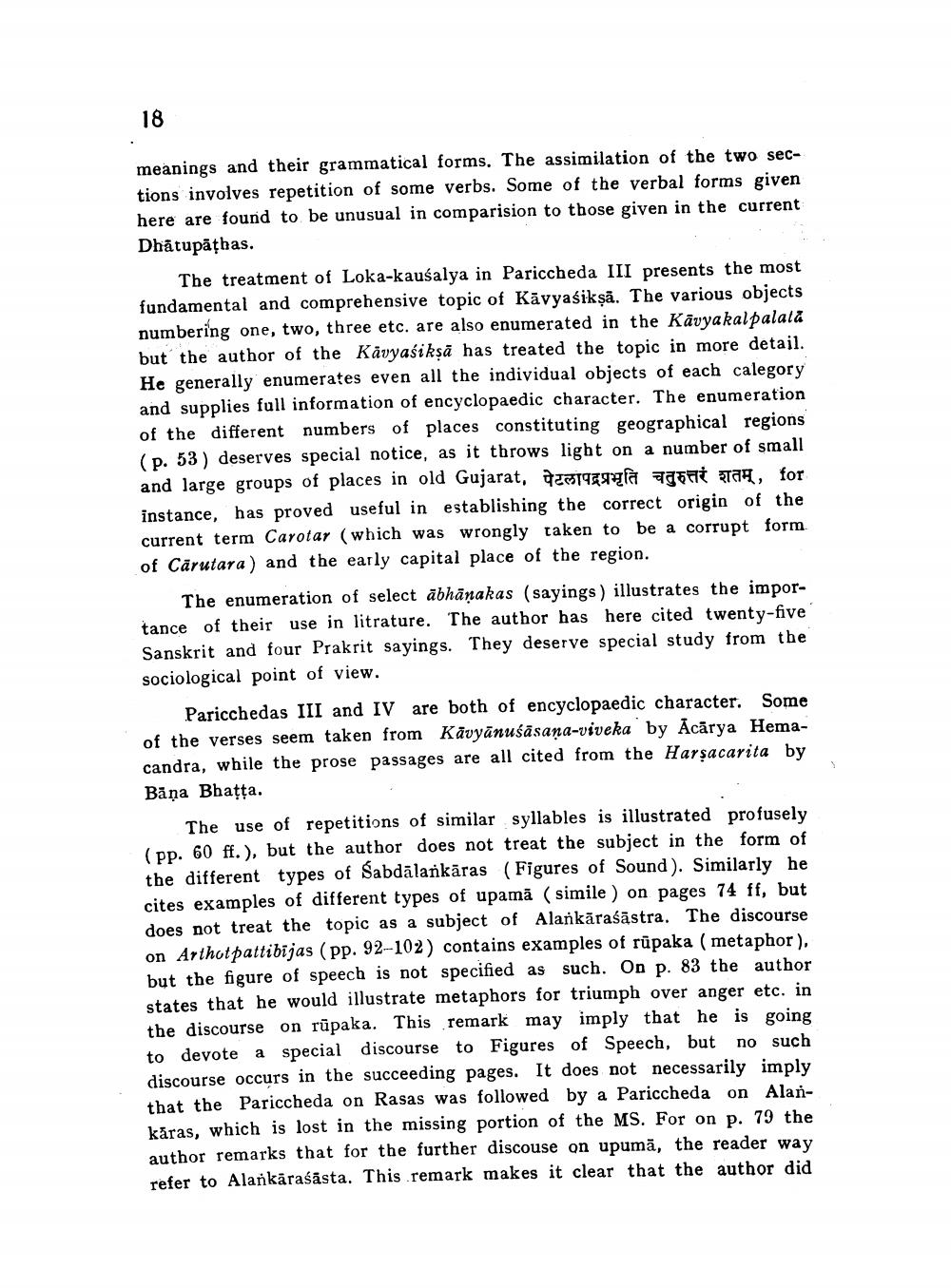________________ 18 meanings and their grammatical forms. The assimilation of the two sections involves repetition of some verbs. Some of the verbal forms given here are found to be unusual in comparision to those given in the current Dhatupathas. The treatment of Loka-kausalya in Pariccheda III presents the most fundamental and comprehensive topic of Kavyasiksa. The various objects numbering one, two, three etc. are also enumerated in the Kavyakalpalata but the author of the Kavyasiksa has treated the topic in more detail. He generally enumerates even all the individual objects of each calegory and supplies full information of encyclopaedic character. The enumeration of the different numbers of places constituting geographical regions (p. 53) deserves special notice, as it throws light on a number of small and large groups of places in old Gujarat, पेटलापद्रप्रभृति चतुरुत्तरं शतम् , for instance, has proved useful in establishing the correct origin of the current term Carotar (which was wrongly taken to be a corrupt form of Carutara) and the early capital place of the region. The enumeration of select abhanakas (sayings ) illustrates the importance of their use in litrature. The author has here cited twenty-five Sanskrit and four Prakrit sayings. They deserve special study from the sociological point of view. Paricchedas III and IV are both of encyclopaedic character. Some of the verses seem taken from Kavyanusasana-viveka by Acarya Hemacandra, while the prose passages are all cited from the Harsacarita by Bana Bhatta. The use of repetitions of similar syllables is illustrated profusely (pp. 60 ff.), but the author does not treat the subject in the form of the different types of Sabdalankaras (Figures of Sound). Similarly he cites examples of different types of upama (simile) on pages 74 ff, but does not treat the topic as a subject of Alankarasastra. The discourse on Arthotpattibijas (pp. 92-102) contains examples of rupaka (metaphor ), but the figure of speech is not specified as such. On p. 83 the author states that he would illustrate metaphors for triumph over anger etc. in the discourse on rupaka. This remark may imply that he is going to devote a special discourse to Figures of Speech, but no such discourse occurs in the succeeding pages. It does not necessarily imply that the Pariccheda on Rasas was followed by a Pariccheda on Alankaras, which is lost in the missing portion of the MS. For on p. 79 the author remarks that for the further discouse on upuma, the reader way refer to Alankarasasta. This remark makes it clear that the author did




